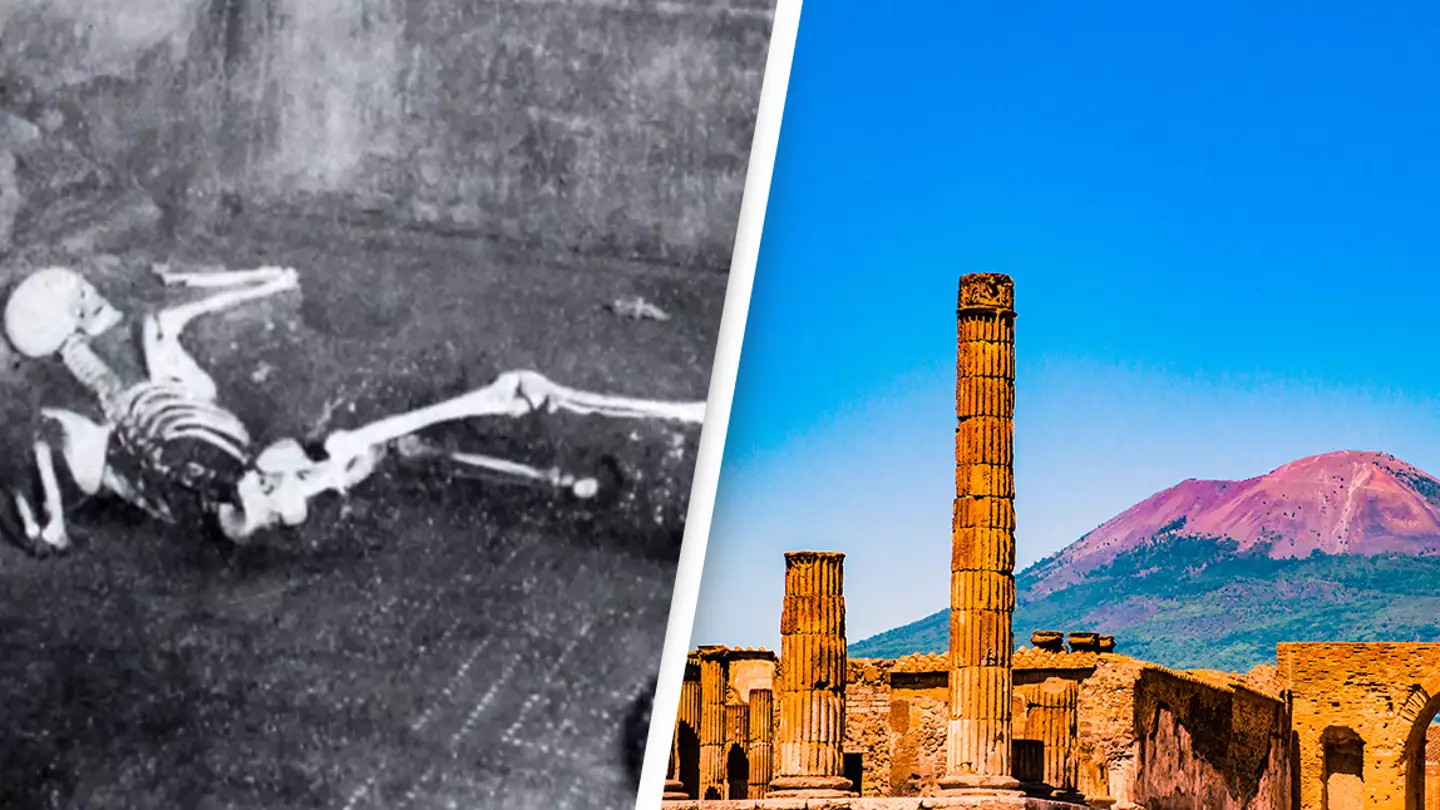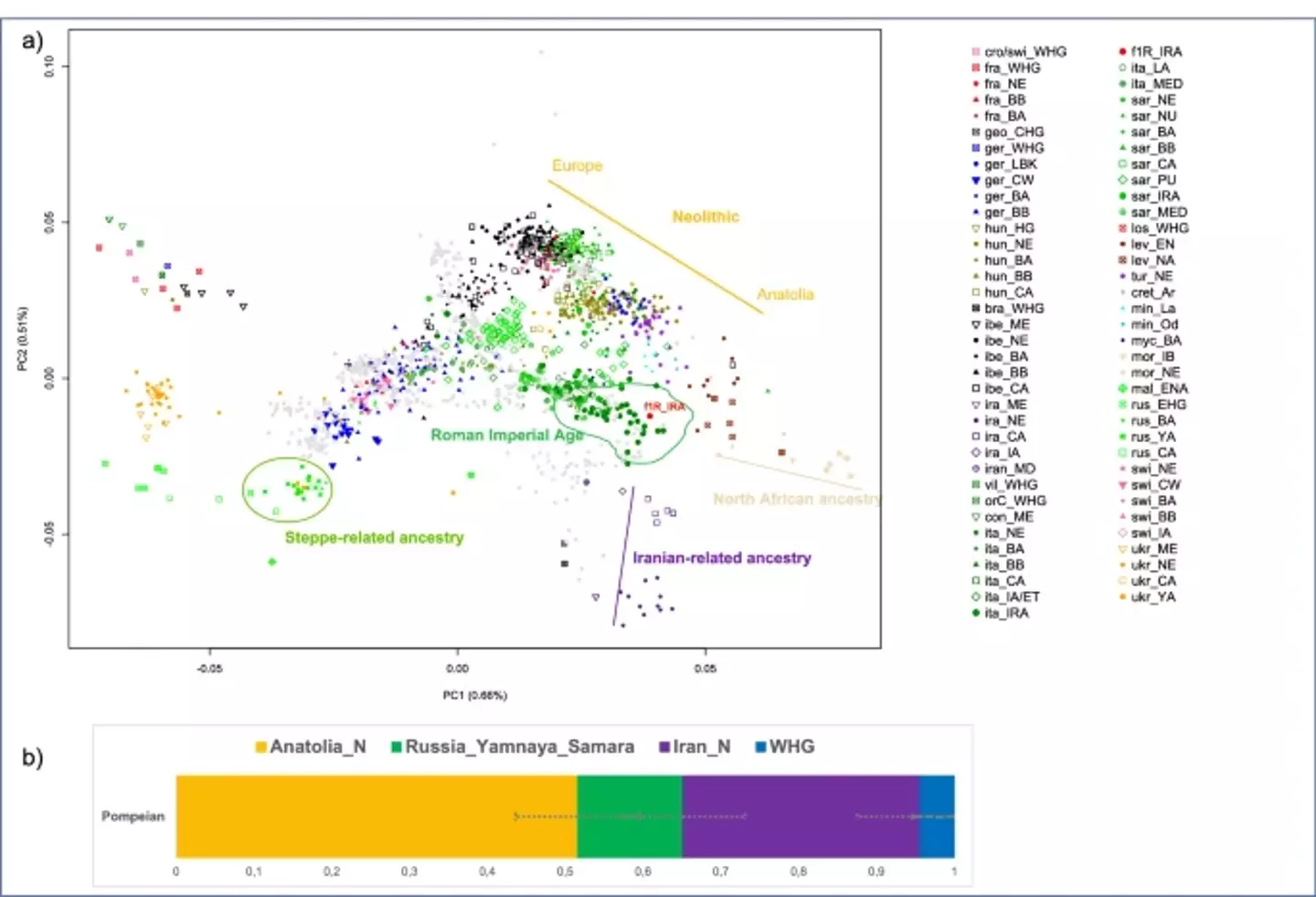
Scientists have revealed they've been able to successfully sequence the DNA of one of the victims of Pompeii for the very first time.
On 24 August 79 AD, Mount Vesuvius erupted, killing thousands of people and causing devastation to the surrounding cities.
The remains of two individuals were discovered in the rooms of the Casa del Fabbro (House of the Craftsman).
Now, for the first time ever, scientists have been able to successfully sequence the genome of the man who was found.
Advert

The study, 'Bioarchaeological and palaeogenomic portrait of two Pompeians that died during the eruption of Vasuvius in 79 AD', was first published in Nature on Thursday, 26 May.
The scientists noted how both of the individual's remains 'underwent osteological examination to establish their respective sex, estimated height, and approximate age-at-death'.
One was a woman, who was over the age of 50 when she died, while the other was a man between the ages of 35 to 40.
Advert
DNA was then extracted from 'a petrous bone from each Pompeiian individual with identical procedures'.
However, due to the 'low coverage obtained' from one of the remains, the scientists had to focus on the DNA belonging to the man.
The remains were confirmed as male by 'the X chromosome coverage' and 'Ry parameter'.
Advert
The man's ancestry was also able to be traced.
The scientists stated their hypothesis as being the man had 'genetic contribution from the Near East'.
However, the study noted the results showed 'no further contribution by Iranian-related ancestry occurred after the Iron Age' in the individual.

Advert
The man was also discovered as living having been affected by tuberculosis.
The discovery was made during a palaeopathological study, 'on the basis of diagnostic morphological markers such as a large lytic destruction on the upper anterior half of the fourth lumbar vertebra L4'.
The report also explained the reasons why any other vertebral osteitis that 'cause similar lesions' were ruled out.
The scientists also extracted Mycobacterium genus and 'remapped those reads to Mycobacterium tuberculosis human strain H37Rv and evaluated deamination patterns'.
Advert

Scientists previously sequenced strands of human and animal DNA from Pompeii, but the attempts proved unsuccessful.
The latest feat is subsequently – to the scientists' 'knowledge' – 'the first successfully sequenced Pompeian human genome'.
The article concluded that while the study is 'limited to one individual', it 'confirms and demonstrates the possibility of applying palaeogenomic methods to study human remains from this unique site'.
Advert
It resolved: "Our initial findings provide a foundation to promote an intensive analysis of well-preserved Pompeian individuals.
"Supported by the enormous amount of archaeological information that has been collected in the past century for the city of Pompeii, their paleogenetic analyses will help us to reconstruct the lifestyle of this fascinating population of the Imperial Roman period."
If you have a story you want to tell, send it to UNILAD via [email protected]
Topics: World News, Science